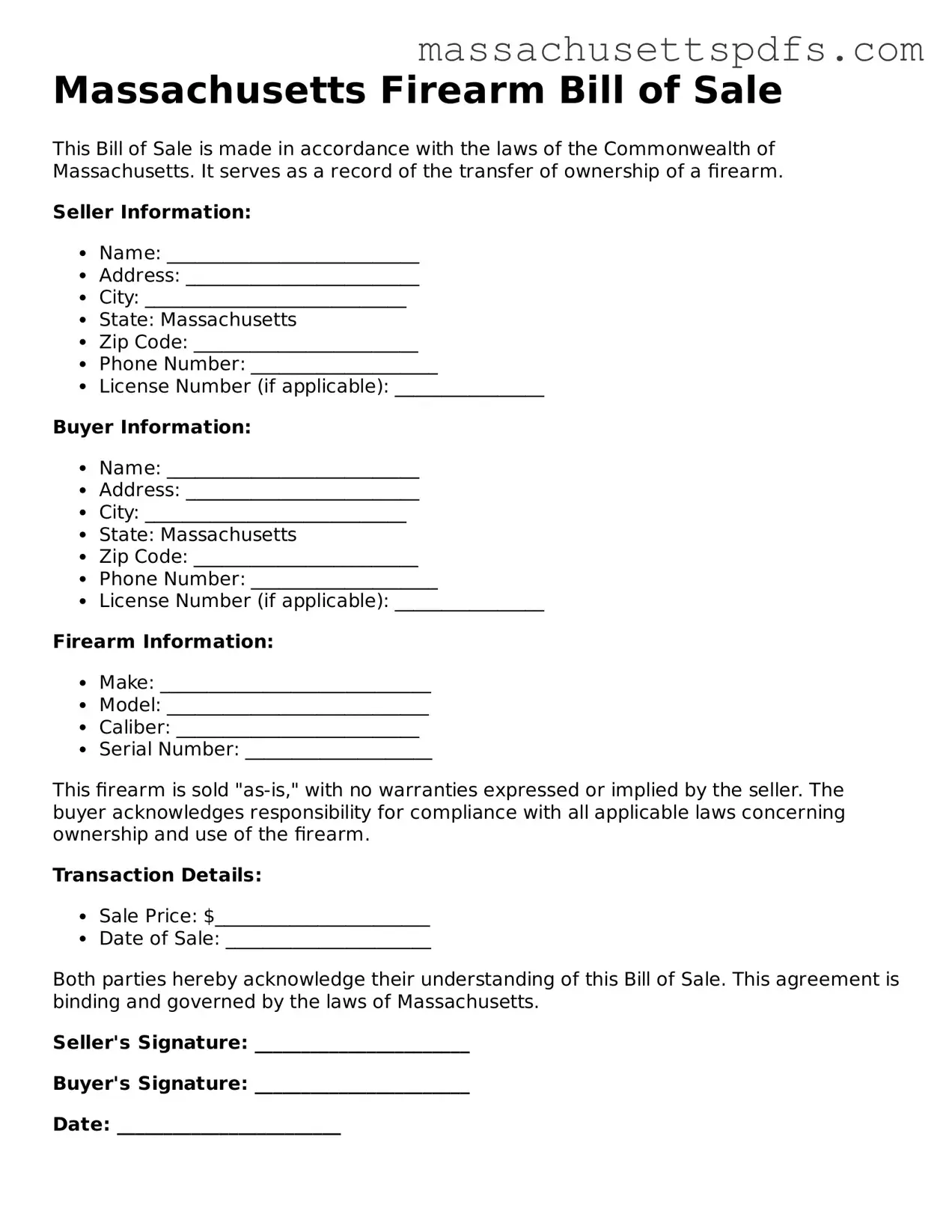Attorney-Approved Massachusetts Firearm Bill of Sale Document
The Massachusetts Firearm Bill of Sale form is a crucial document that facilitates the legal transfer of firearm ownership between private parties in the state. This form serves to protect both the buyer and seller by providing a clear record of the transaction, ensuring compliance with state laws. Understanding its importance is vital for anyone involved in the sale or purchase of firearms in Massachusetts.
To ensure a smooth and compliant transaction, consider filling out the form by clicking the button below.
Launch Editor Here
